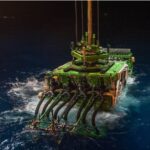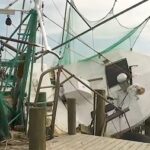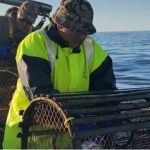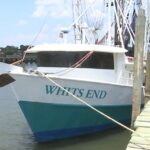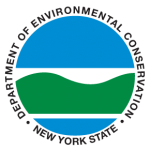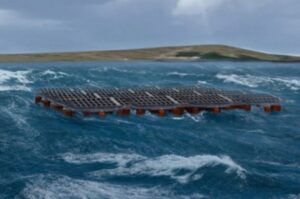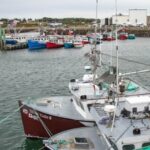Tag Archives: commercial fishery
Lobster group files legal action over moderate livelihood fishery
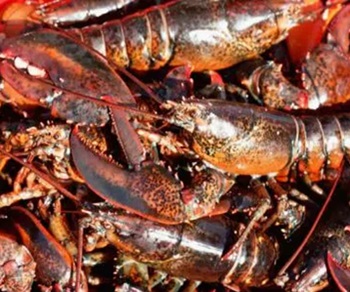 A lobster conservation group in southwestern Nova Scotia is taking legal action against Ottawa and the Sipekne’katik First Nation over out of season fishing. The Unified Fisheries Conservation Alliance (UFCA) filed a notice of action in Supreme Court in an effort to declare the summer fishery illegal. “The Supreme Court of Canada introduced the concept of a moderate livelihood fishery via the Marshall decisions but has never adequately defined the scope and limits that should apply,” said Michel Samson, counsel with the law firm Cox & Palmer. “This has created confusion between the DFO and the Public Prosecution Service as to what laws to enforce. It is imperative that our courts provide the rules and clarity required for both the commercial fishery and for First Nation communities.” more, >>CLICK TO READ<< 13:05
A lobster conservation group in southwestern Nova Scotia is taking legal action against Ottawa and the Sipekne’katik First Nation over out of season fishing. The Unified Fisheries Conservation Alliance (UFCA) filed a notice of action in Supreme Court in an effort to declare the summer fishery illegal. “The Supreme Court of Canada introduced the concept of a moderate livelihood fishery via the Marshall decisions but has never adequately defined the scope and limits that should apply,” said Michel Samson, counsel with the law firm Cox & Palmer. “This has created confusion between the DFO and the Public Prosecution Service as to what laws to enforce. It is imperative that our courts provide the rules and clarity required for both the commercial fishery and for First Nation communities.” more, >>CLICK TO READ<< 13:05
Commercial fishers demand stricter enforcement and penalties for illegal lobster sales – Federal and provincial governments need to step-up enforcement
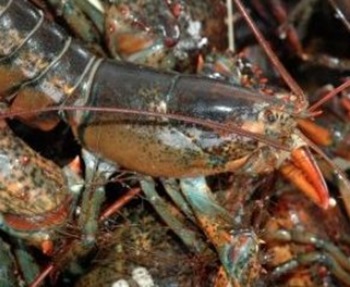 Uncertainty on the future of the commercial fishery will potentially put the sustainability of the lobster catch and jobs at risk according to the leaders of the Coalition of Atlantic and Quebec Fishing Organizations and the Unified Fisheries Conservation Alliance (UFCA). The upcoming meeting of fisheries ministers from across Canada is a unique opportunity to make sure the commercial fishery remains sustainable. Action is needed from both federal and provincial officials. For the Government of Canada, keeping independent enforcement officers on the water is critical to making sure no one fishes out of season. “Enforcing one set of rules for everyone is the key to a strong fishery. Impartial, independent enforcement officers at Department of Fisheries and Oceans is at the heart of a sustainable fishery,” according to Gordon Beaton, president of the Gulf Nova Scotia Fleet Planning Board. “We are concerned about potential changes to enforcement, we need more, not less, independent enforcement of the rules.” Science, not politics, should be driving decisions on the fishery. more, >>CLICK TO READ<< 17:40
Uncertainty on the future of the commercial fishery will potentially put the sustainability of the lobster catch and jobs at risk according to the leaders of the Coalition of Atlantic and Quebec Fishing Organizations and the Unified Fisheries Conservation Alliance (UFCA). The upcoming meeting of fisheries ministers from across Canada is a unique opportunity to make sure the commercial fishery remains sustainable. Action is needed from both federal and provincial officials. For the Government of Canada, keeping independent enforcement officers on the water is critical to making sure no one fishes out of season. “Enforcing one set of rules for everyone is the key to a strong fishery. Impartial, independent enforcement officers at Department of Fisheries and Oceans is at the heart of a sustainable fishery,” according to Gordon Beaton, president of the Gulf Nova Scotia Fleet Planning Board. “We are concerned about potential changes to enforcement, we need more, not less, independent enforcement of the rules.” Science, not politics, should be driving decisions on the fishery. more, >>CLICK TO READ<< 17:40
Del Norte Fishermen Are Pissed About Nearshore Groundfish Fishery Closure
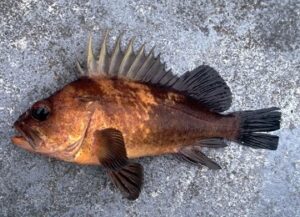 Del Norte County fishermen say a California Department of Fish and Wildlife decision to close the nearshore groundfish fishery in the north part of the state starting next week could economically devastate the community. At least seven appeared before the local Fish and Game Advisory Commission on Monday, urging commissioners to send a letter to the agency as well as state representatives Mike McGuire and Jim Wood. The information CDFW scientists used to close the near-shore groundfish fishery comes from the recreational estimated catch of quillback rockfish as well as estimates from the commercial fishery within the Northern Groundfish Management Area, she said Tuesday. The Northern GMA stretches from about Cape Mendocino to the California-Oregon border. >click to read< 07:46
Del Norte County fishermen say a California Department of Fish and Wildlife decision to close the nearshore groundfish fishery in the north part of the state starting next week could economically devastate the community. At least seven appeared before the local Fish and Game Advisory Commission on Monday, urging commissioners to send a letter to the agency as well as state representatives Mike McGuire and Jim Wood. The information CDFW scientists used to close the near-shore groundfish fishery comes from the recreational estimated catch of quillback rockfish as well as estimates from the commercial fishery within the Northern Groundfish Management Area, she said Tuesday. The Northern GMA stretches from about Cape Mendocino to the California-Oregon border. >click to read< 07:46
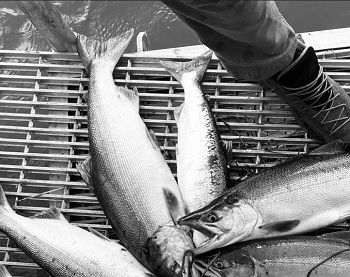
B.C. fishermen fume as their Americans counterparts fish
Commercial salmon fishers and environmentalists are crying foul, for opposite reasons after U.S. fisheries officials let American fishers hit the water while the Canadian government kept their counterparts ashore. After several years of historically low runs, the Pacific Salmon Commission (PSC), an international fisheries management organization, estimated last week that enough sockeye, about 4.4 million, would return to the Fraser River to support a commercial fishery. American fisheries managers adopted the commission’s estimate, opening a small commercial fishing window over the weekend. But in a rare disagreement, Canadian officials did not, citing concerns the run would be nearly one million fish smaller than predicted, and kept Canada’s waters closed. >click to read< 10:16
Concern for BC sockeye salmon as return estimates drop by millions – The Pacific Salmon Commission’s pre-season estimate of 9.8 million returning fish went down to 5.5 million Monday, prompting environmentalists and fishers alike to express concern. >click to read<
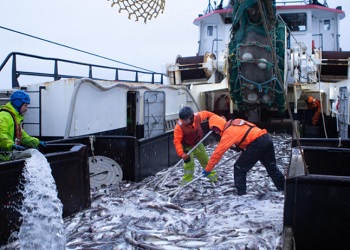
$350M Bering Sea fish fight could hinge on a miniature Canadian railroad
The quickly escalating saga involves hundreds of millions of dollars in fines, and a miniature Canadian railway,,, American Seafoods’ shipping subsidiary and an affiliate company, Kloosterboer International Forwarding, sued U.S. Customs and Border Protection in federal court Thursday,,, The Jones Act, a century-old federal law, typically requires American-flagged ships to move cargo between American ports. But the legislation contains an exception known as the “Third Proviso,” ,,Vessels flagged in countries like Singapore and the Bahamas first pick up frozen seafood products in Dutch Harbor, then travel to the Canadian port of Bayside, New Brunswick, just across the border from Maine. From Bayside, the seafood would be trucked to a Canadian train, loaded and moved 20 miles between two stations,,, >click to read< 14:10
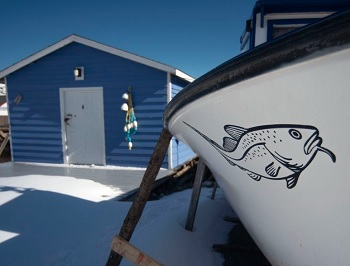
Nearly 30 years into the moratorium, Newfoundlanders look for ways to rebuild Cod
Atlantic cod, the species better known by its population name, Northern cod, is the fish of choice for Newfoundlanders and Labradorians. On a day spent handlining cod on the North Atlantic off of Petty Harbour-Maddox Cove, a centuries-old fishing community just outside of St. John’s, it can be easy to forget cod has a storied history – and a still uncertain future. Northern cod survived near-decimation from overfishing three decades ago, leading the federal department of Fisheries and Oceans Canada (DFO) to shutter the commercial cod fishery in 1992. Meant to last two years, the cod moratorium remains in effect, although DFO reopened an inshore commercial fishery, called the “stewardship fishery,” in 2006. >click to read< 11:00
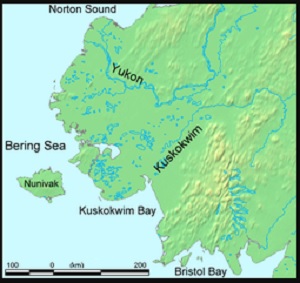
New Co-Op Allows Fishermen From Four Villages To Participate In Kuskokwim Bay Commercial Fishery
A group of fishermen in Quinhagak has formed an organization to revitalize commercial salmon fishing in Kuskokwim Bay. Their group is called the Independent Fishermen of Quinhagak Cooperative. On Monday, June 29, there will be a 12-hour commercial opening in Kuskokwim Bay from 8 a.m. to 8 p.m. Fishermen are limited to six-inch mesh or less. It’s the area’s first commercial opening in five years.,, The board has approved 70 fishermen to participate and has limited the co-operative’s eligibility to fishermen residing in four nearby villages—Quinhagak, Goodnews Bay, Platinum, and Eek. >click to read< >click to read< 11:22
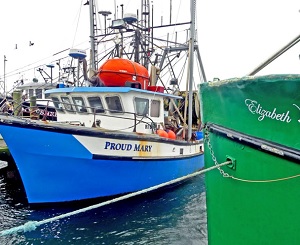
Coronavirus: Rhode Island’s commercial fishery and aquaculture industry hit hard
Until the COVID-19 pandemic, the Rhode Island aquaculture industry had been expanding. In 2019, the the total value of shellfish crops was $5.8 million and the industry employed about 200 people. Coastal Resources Management Council Aquaculture and Fisheries Coordinator David Beutel said the consequences of the evaporation of the major markets for shellfish are now being felt at all levels of the industry. “They can’t sell product because most of it goes to restaurants,” he said. The fin fishery is also suffering. Christopher Brown, executive director of the Rhode Island Commercial Fishermen’s Association, said the impact varied according to vessel size and catch. Social distancing is difficult, if not impossible, on a boat. >click to read< 10:17
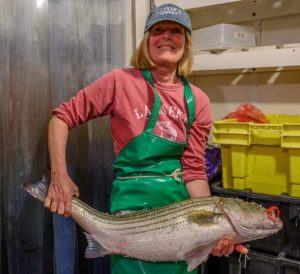
Commercial Striped Bass Season Opens, Amid Concerns About Fishery
By the end of the day Monday, the first day of the commercial striped bass season, the Menemsha Fish House had brought in 297 filleted pounds of the elusive — and profitable — fish. Otto Osmers, a commercial fisherman and fishmonger at the Fish House, said it was an about average commercial day in terms of pounds of fish landed. And he acknowledged that the season begins amid concern among fishermen and regulators over declining stocks. >click to read<10:05
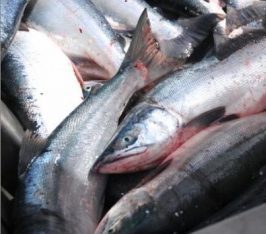
Horrible timing
The Alaska Department of Fish and Game was Wednesday lobbying Alaska residents to buy Chitina dipnet permits to fish the Copper River even as the troubled, 2018 return of sockeye salmon to that big, muddy drainage was fading so badly that Cordova commercial fishermen pleaded to have the dipnet fishery shut down. “As of today sonar counts are well below projected counts and remain below the minimum threshold of 360,000 sockeye salmon for spawning escapements,” the Cordova District Fishermen United said in a letter to state officials. “In light of the weak early run component, restrictive closures on commercial fishing openers, and no noticeable increase in counts at the sonar currently, it is in the best interest of our sockeye runs to close the Copper River personal use and sport fisheries.” >click to read<18:26
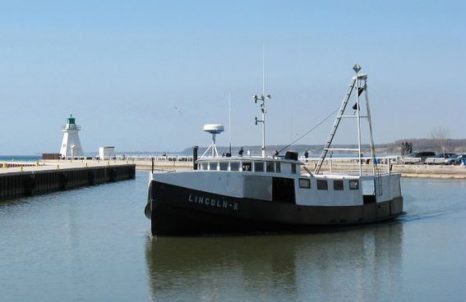
TAC increase brings optimistic times for Lake Erie commercial fishery
The Canada-U.S. committee that manages the fishery likes the recent research data it has seen. As a result, the Lake Erie Committee has increased the amount of yellow perch and walleye commercial fishermen are allowed to catch this year. The total allowable catch for yellow perch has been pegged at 10.4 million pounds. This is a 13 percent increase over 2016. The numbers are even better for walleye, which is commonly served in lakeshore restaurants as pickerel. As a top predator in the lake, walleye are managed as individuals and not by weight. The Lake Erie Committee will allow 5.924 million walleye to be harvested this year. That’s a 20 percent increase over 2016. click here to read the story 09:38
Salmon are rolling into Upper Cook Inlet’s commercial fishery
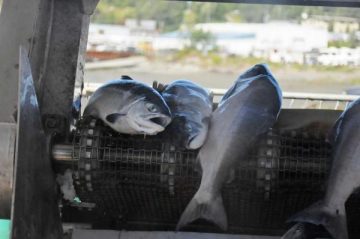 The drift fleet and setnetters in Cook Inlet have been out frequently in the past two weeks and were out for extended hours Thursday. The Alaska Department of Fish and Game also opened the drift gillnet fishery in the Expanded Kenai and Expanded Kasilof Sections of the Upper Subdistrict and the Anchor Point Section of the Lower Subdistrict for an additional 12-hour period on Friday to increase harvest on the sockeye salmon bound for the Kenai and Kasilof rivers, according to an emergency order issued Thursday. The salmon harvest came in just shy of 2 million as of Tuesday, with sockeye leading the pack at 1.6 million, followed by pink salmon at approximately 244,000 fish. Silvers and chum are starting to come in as well, with about 43,000 silvers and about 57,000 chums so far, according to Fish and Game’s inseason harvest estimates. Read the rest here 08:27
The drift fleet and setnetters in Cook Inlet have been out frequently in the past two weeks and were out for extended hours Thursday. The Alaska Department of Fish and Game also opened the drift gillnet fishery in the Expanded Kenai and Expanded Kasilof Sections of the Upper Subdistrict and the Anchor Point Section of the Lower Subdistrict for an additional 12-hour period on Friday to increase harvest on the sockeye salmon bound for the Kenai and Kasilof rivers, according to an emergency order issued Thursday. The salmon harvest came in just shy of 2 million as of Tuesday, with sockeye leading the pack at 1.6 million, followed by pink salmon at approximately 244,000 fish. Silvers and chum are starting to come in as well, with about 43,000 silvers and about 57,000 chums so far, according to Fish and Game’s inseason harvest estimates. Read the rest here 08:27
Fishing vs. offshore energy: A fight for the ocean’s future
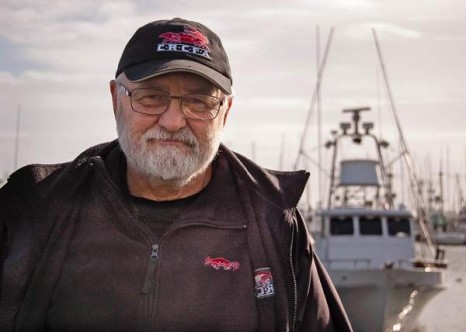 Fishermen are looking keep their grounds through Pacific County’s new shoreline buffers. The Shoreline Management Program (SMP) limits development to protect water quality, habitat and coastal functions. For years, local agencies have worked to rewrite the program to match new state guidelines.,, Out of the state’s remaining 38 miles of coast open for fishing and development, roughly 32 of those miles border Pacific County. The limited space has caused fishermen to worry that offshore development will cut them off from the catch. Read the rest here 15:20
Fishermen are looking keep their grounds through Pacific County’s new shoreline buffers. The Shoreline Management Program (SMP) limits development to protect water quality, habitat and coastal functions. For years, local agencies have worked to rewrite the program to match new state guidelines.,, Out of the state’s remaining 38 miles of coast open for fishing and development, roughly 32 of those miles border Pacific County. The limited space has caused fishermen to worry that offshore development will cut them off from the catch. Read the rest here 15:20
Wearing Rose Colored Glasses on P.E.I. – High hopes that Invasive green crabs could become lucrative commercial fishery
 P.E.I.’s first commercial green crab fishery is underway. Fourteen fishermen have been granted licences from the federal Department of Fisheries and Oceans to fish this invasive species until mid-November. Not a lot of green crab has been landed so far. Fishermen believe the two recent harsh winters have knocked numbers down. Luke Poirier says chefs have been making the crab into a single-bite appetizer using Cajun-style spices. He believes a successful soft-shelled crab fishery will be established eventually on P.E.I. Read the rest here 09:47
P.E.I.’s first commercial green crab fishery is underway. Fourteen fishermen have been granted licences from the federal Department of Fisheries and Oceans to fish this invasive species until mid-November. Not a lot of green crab has been landed so far. Fishermen believe the two recent harsh winters have knocked numbers down. Luke Poirier says chefs have been making the crab into a single-bite appetizer using Cajun-style spices. He believes a successful soft-shelled crab fishery will be established eventually on P.E.I. Read the rest here 09:47
The Cape Cod Fisherman – About time…
 It’s been 19 yrs since the NMFS/ASMFC said striped bass were restored and the moratorium on a directed fishery was lifted here in MA. Since then a fishery has developed, which is unlike almost any other, anywhere. At first, the majority of fishermen, were already fishing for other things, like fluke, back sea bass, tuna, cod etc. The striped bass fishery has remained at a fairly large quota, while we’ve seen the quota’s (and abundance) for other fisheries shrink. Now, in 2014, 19 yrs – Read more here 09:37
It’s been 19 yrs since the NMFS/ASMFC said striped bass were restored and the moratorium on a directed fishery was lifted here in MA. Since then a fishery has developed, which is unlike almost any other, anywhere. At first, the majority of fishermen, were already fishing for other things, like fluke, back sea bass, tuna, cod etc. The striped bass fishery has remained at a fairly large quota, while we’ve seen the quota’s (and abundance) for other fisheries shrink. Now, in 2014, 19 yrs – Read more here 09:37
Hoonah Sound: “There’s a natural event happening out there that we can’t explain at this time,” Herring fishery will be closed
 A herring return forecast lower than the 1,000-ton threshold necessary to conduct a commercial fishery has caused the Alaska Department of Fish and Game to disallow commercial spawn-on-kelp pound fishery in Sitka’s Hoonah Sound for the 2014 season. The method of herring egg collection entails catching fish with seine gear, placing them in enclosures and harvesting their eggs from kelp fronds to be sold. more@juneauempire 12:30
A herring return forecast lower than the 1,000-ton threshold necessary to conduct a commercial fishery has caused the Alaska Department of Fish and Game to disallow commercial spawn-on-kelp pound fishery in Sitka’s Hoonah Sound for the 2014 season. The method of herring egg collection entails catching fish with seine gear, placing them in enclosures and harvesting their eggs from kelp fronds to be sold. more@juneauempire 12:30
Commercial fishery for black sea bass ends after four months – Closed – Cape Hatteras to Key West, Fla.,
The year-long commercial fishery for black sea bass closed earlier this month after being open for just four months, a preemptive measure designed to protect recovering fish populations throughout the Atlantic Ocean. According to the National Oceanic and Atmospheric Administration, the fishery’s 309,000-pound annual catch limit – the amount of fish that can be harvested each year without adversely affecting population levels, according to federal regulators – was reached early.
http://www.starnewsonline.com/article/20121021/ARTICLES/121029971/-1/news01?p=1&tc=pg
Southcentral Alaska halibut anglers may face bag limit cuts by 2014 – Alaska Dispatch
Once more the North Pacific Fisheries Management Council, a government entity dominated by commercial fishermen, has voted to slash the halibut catch of charter anglers in Alaska. What happens next remains to be seen. A similar council action was vetoed by the National Oceanic Atmospheric Administration (NOAA) last year after,,,,,,,,,,,unities have mainly suffered because of cuts in the commercial fishery tied to unexplained declines in halibut in the North Pacific. Soaring prices for commercially caught halibut have only partially ,,,,,,,the federal government created what are called “individual fishing quotas” and gave commercial fishermen shares of the halibut resource, those shares have been bought and ,,,,,,,the University of Washington warned that the shifts in IFQ shares were gutting the economies of the smallest coastal communities on Kodiak Island. A similar phenomenon has ,,,,Read More


































